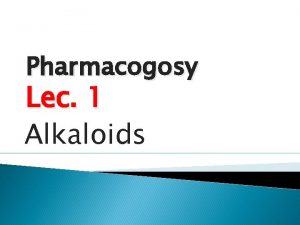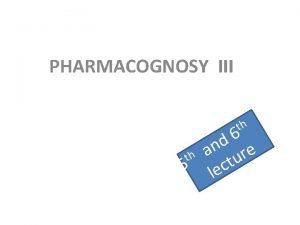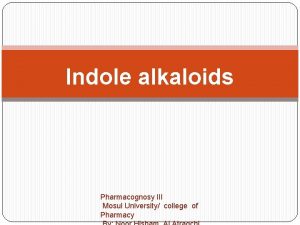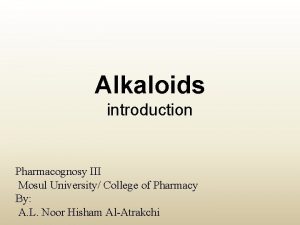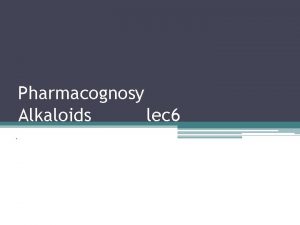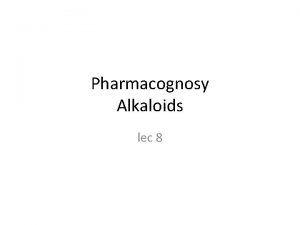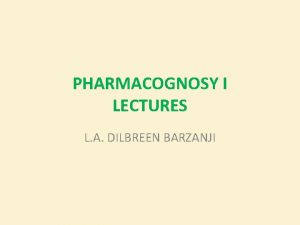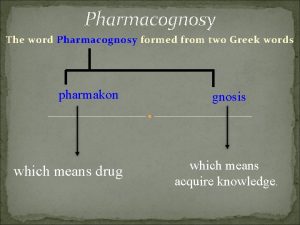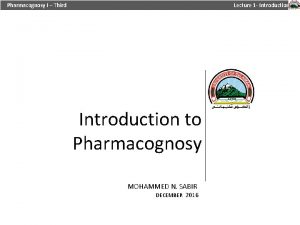Pharmacognosy lec 2 alkaloids Chemistry of alkaloids Alkaloids










- Slides: 10

Pharmacognosy lec 2 alkaloids

Chemistry of alkaloids �Alkaloids are difficult to define because they are represented a non homogenous group of compounds. �In general alkaloids are basic nitrogenous compounds. The degree of basicity varies greatly depending on the structure of the molecule and the presence and location of other functional groups. Like ammonia. �the alkaloid are converted into their salts by aqueous mineral acids and when the salt of an alkaloids is treated with hydroxide ion nitrogen gives up hydrogen ion and the free amine is liberated.

�The quaternary ammonium compound have no proton to give up thus is not effected by hydroxide ion. �This property is useful in the extraction from plants. �For the most parts the alkaloids are insoluble or sparingly so in water, but the salts formed on reaction with acids are usually freely soluble. �The free alkaloids are usually soluble in ether, chloroform, immiscible solvents, in which, however, the alkaloid salts are insoluble. �This is important in the isolation , purification and quantitative estimation.

�Most of the alkaloids are crystalline solids, although a few are amorphous. �An additional few, coniine, nicotine, and sparteine, which lack oxygen in their molecules, are liquids. �Alkaloidal salts are crystalline, and their crystal are a useful means of rapid microscopic identification.

�Here is some of the possibility of the function of alkaloids in plants and the reasons why they occur there: - 1. Poisonous agents protecting the plants against insects and herbivores. 2. End products of detoxification reactions. 3. Regulatory growth factor. 4. Reserve substances capable of supplying nitrogen or other elements necessary to the plant’s economy.

Identification of alkaloids �The alkaloids may precipitated from neutral or acidic solutions by a reagent. �These reagents include: 1. Wagner’s reagent ( iodine in potassium iodide). 2. Mayer’s reagent ( potassium mercuric iodide).

3 - dragendroff’s reagent ( potassium bismuth iodide). 4 - Some of the alkaloids did not give precipitate with these reagents like caffiene so we use a specific test ( muroxide test). Modern phytochemistry used TLC with a marker from standered alkaloids to detect the presence of alkaloids in plants.

Biosynthesis of alkaloids �Shikimate and acetate pathways are the sources of amino acids which are the sources of alkaloids. �In general alkaloids form by a Mannich like condensation between Schiff base (imine) and carbanion.


Thank you for listening The end
